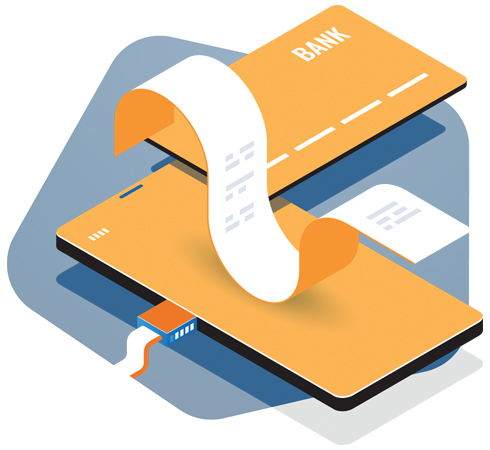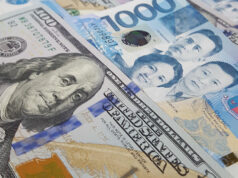
I am sure many people have shifted to cashless payments a long time ago, starting with doing credit card bill payments online. And then there came bills for household utilities like electric, telephone, water, cable TV and/or Internet service. In my case, in the last 20 years, I have found electronic and online payment to be a convenient and efficient mode of paying for personal bills.
It all started with payroll, of course, when in the early 1990s more and more companies started paying their employees through bank accounts with cards for Automated Teller Machines or ATMs. In my case, it was with BusinessWorld in 1993. Prior to the ATM era, the employees still lined up at the cashier to receive their pay slips and pay envelopes.
Soon after ATMs came phone banking, and I recall having to call an automated phone system just to check on bank balances and other transactions. Then came the online banking system, which was very convenient. That is, if you had a stable internet connection. Back then, in the 1990s, many of us were still using dial-up access and had to contend with snail-paced linkages.
Along with steady (but not necessarily profitable) employment as a newspaper reporter, and then later as a newspaper editor, and a regular paycheck, came credit card use for me. I remember my first “international” credit card in the mid-1990s, issued by a foreign bank, having a credit limit of only P20,000. My first “local” credit card came with a limit of only P5,000.
About 25 years since, much has changed in the environment for personal financial transactions. Nowadays, people use all sorts of payment modalities — credit cards, pre-paid cards, beep cards, RFID tap cards, and G-Cash and PayMaya systems among others via mobile phones. All this, in a way, have limited people’s use of a checking account for paying bills and purchases. It has significantly reduced the amount of cash I carry on my person, even when traveling.
This is, I believe demographic driven as well. Younger generations are more inclined to use electronic or online mode of payments than people older than 60, for instance. Teens and those in their 20s and 30s are also more comfortable doing online purchases and payments, and more through their mobile phones than personal computers.
Whether we like it or not, the cashless era is here. And, I believe, sooner than later, more people will be using modes other than cash to make payments or purchases. Personally, I notice that I have been carrying and using less cash of late, opting to pay via other modes when available. For one, it makes my financial transactions easier to track. And, I don’t have to contend with the lack of coins or loose change.
I recall during our first trip to Ho Chi Minh several years ago, we encountered some difficulty with communication, currency, and transportation. Not many people knew how to speak English, and it was difficult to give directions to taxi. Thus, in future trips, data connection became a must. The mobile phone with internet connection was necessary for Google maps.
We also used Uber for going around, where you set the destination and pick up, and paid via card. So, no need to “communicate” with the driver or pay in cash. We also booked ahead a rental for airport service. We also used Google translate to communicate with locals. But the nice thing with Vietnam is that as you leave, at the airport, you can return whatever local currency you have left and they will change it to your currency of choice.
So it wasn’t a surprise, at least to me, that a recent study from Citibank Philippines showed that local credit card users “are becoming more at home with digital transactions, with more of them accessing online services for big services like travel and lodging.” BusinessWorld quoted Citibank as reporting that “more than 50% of our customers that are coming into credit cards are coming through digital channels, and more than 70% of our loans are now acquired through digital channels.”
The paper also reported that the Bangko Sentral ng Pilipinas (BSP) is targeting to have 20% of the total volume and 30% of the total value of financial transactions in the country done digitally in the short-term. The mid-term aim is to get 50% of transaction volumes done digitally by the end of mid-2023.
Only recently, the Bureau of Internal Revenue (BIR) said it was expecting to grow the volume of taxes paid online after launching a 7th electronic channel through e-wallet service PayMaya. BusinessWorld quoted BIR Deputy Commissioner for Information Systems Group Lanee C. David as saying that electronic filers (e-filers) have increased over the years after the opening of various digital platforms, noting that the number of e-filers nearly tripled from 2015 levels to 1.796 million, including 60% of the bureau’s business taxpayers.
She was also quoted as saying that PayMaya could expand the taxpaying demographic particularly for its client base of individuals and the unbanked, since the platform does not require users to have a bank account. The other six electronic payment systems in use for tax payments are electronic filing and payment system (eFPS), Globe GCash, Development Bank of the Philippines’ PayTax Online, the e-Tax Payment System (eTPS) of the Land Bank of the Philippines, and Union Bank’s Online Tax Payment facility.
She also said around 84% of all taxes collected by the bureau in 2019 were received through online portals, most of which were from large taxpayers such as businesses, with the remaining 16% collections were received over the counter. Total amount of tax payments processed online surged 92% to P1.2 billion in 2019, according to the Department of Finance. The number of electronic tax payments also increased to 446,753 total transactions, up 60%.
There is another distinct advantage to doing electronic or online financial transactions. Money, undoubtedly, can get very dirty. In fact, a lot of germs and bacteria can get transferred from one hand to another as money — bills and coins — change hands during purchases particularly in markets and other public places.
In China, for instance, the South China Morning Post has reported that the Guangzhou branch of China’s central bank would “destroy all banknotes collected by hospitals, wet markets, and buses to ensure the safety of cash transactions as the country battles a coronavirus outbreak.” It added that financial news outlet Caixin has reported that officials at the People’s Bank of China’s (PBOC) branch in the southern city ordered that all paper currency from sectors with high exposure to the coronavirus be withdrawn for destruction.
Commercial banks in the province were ordered to put banknotes from these sectors aside, disinfect them, and hand them in to the PBOC. The central bank reportedly uses high temperatures or ultraviolet light to disinfect cash, and store the currency for more than 14 days before putting it back in circulation.
In today’s setting, I believe the spread of disease is a major consideration in doing electronic or online financial transactions. In the past, merchants used to say, “credit is good, but we prefer cash.” Soon, I hope, they will start thinking that electronic money is just as good if not better than credit or cash.
Marvin Tort is a former managing editor of BusinessWorld, and a former chairman of the Philippines Press Council.



